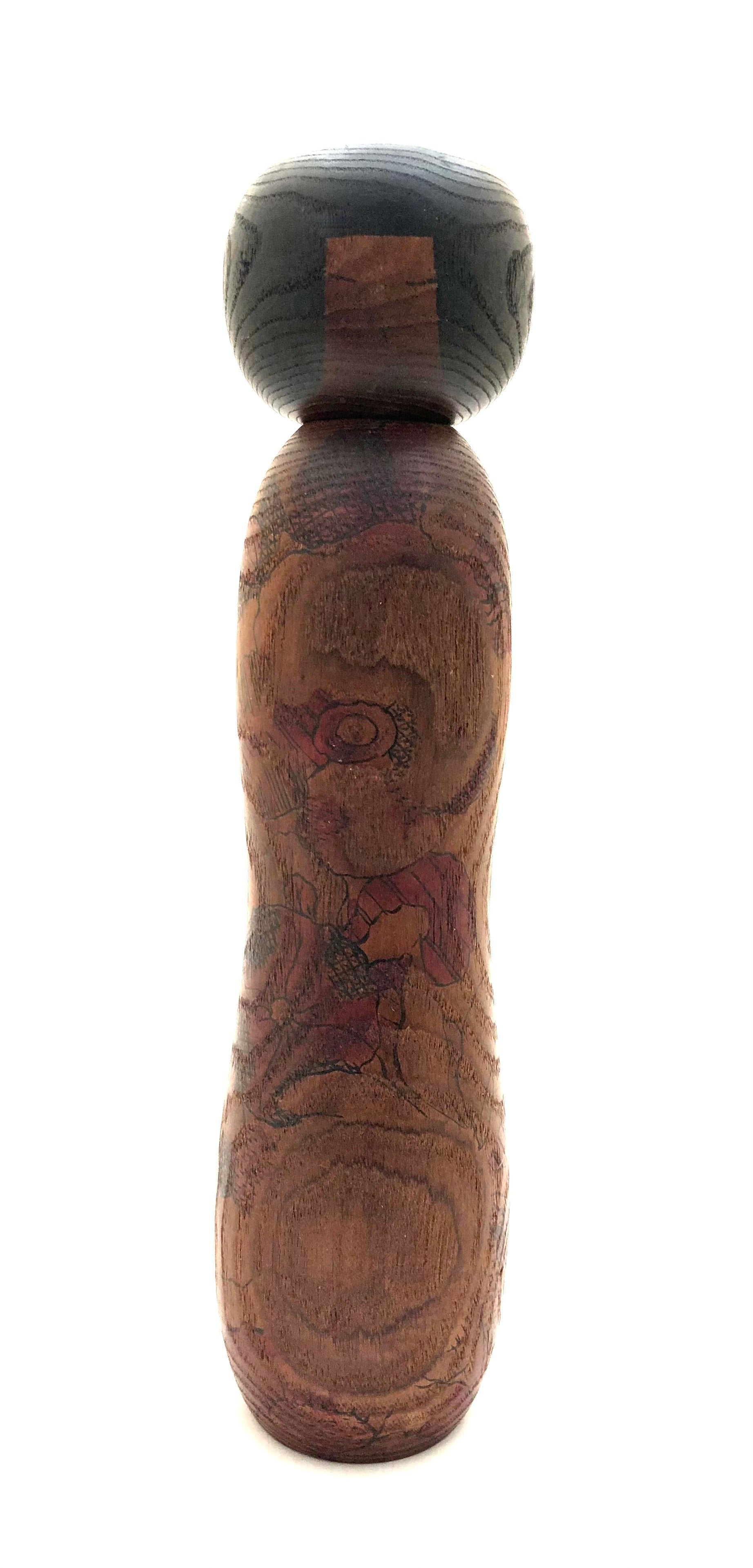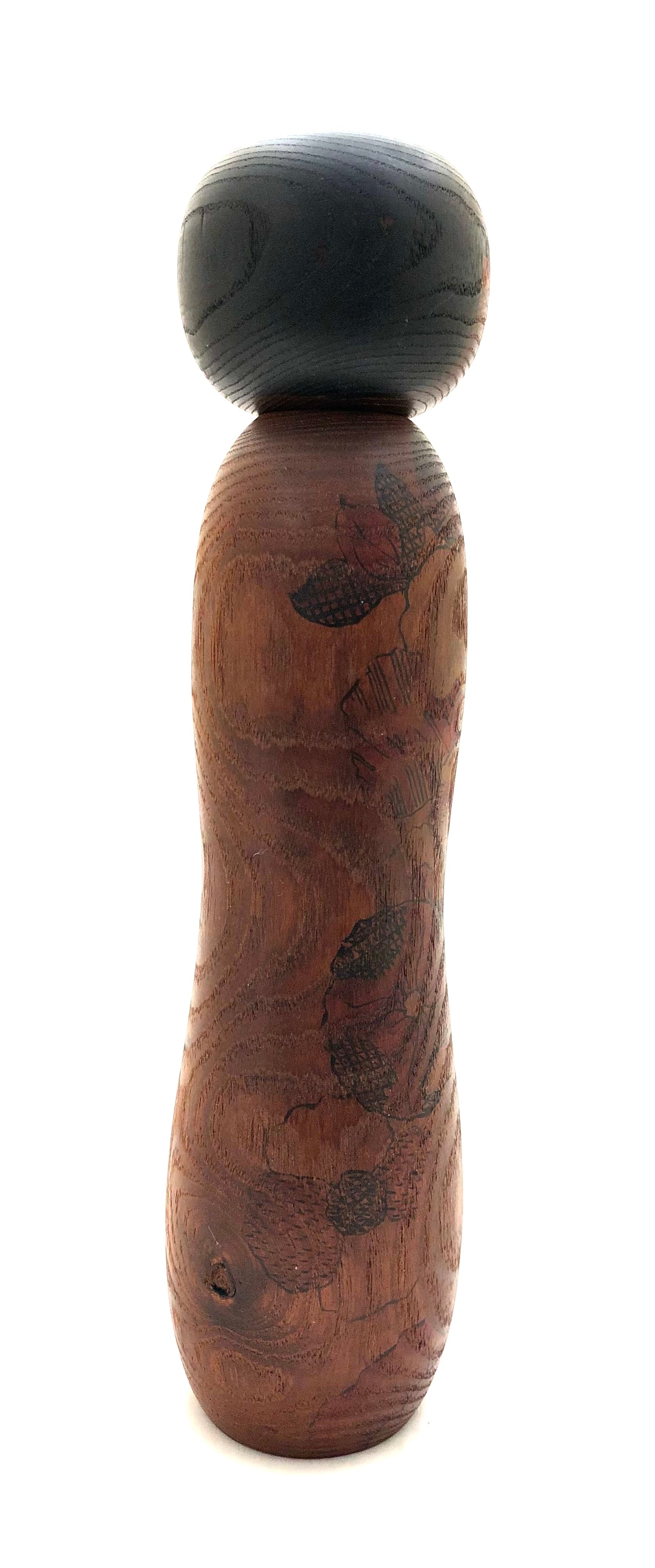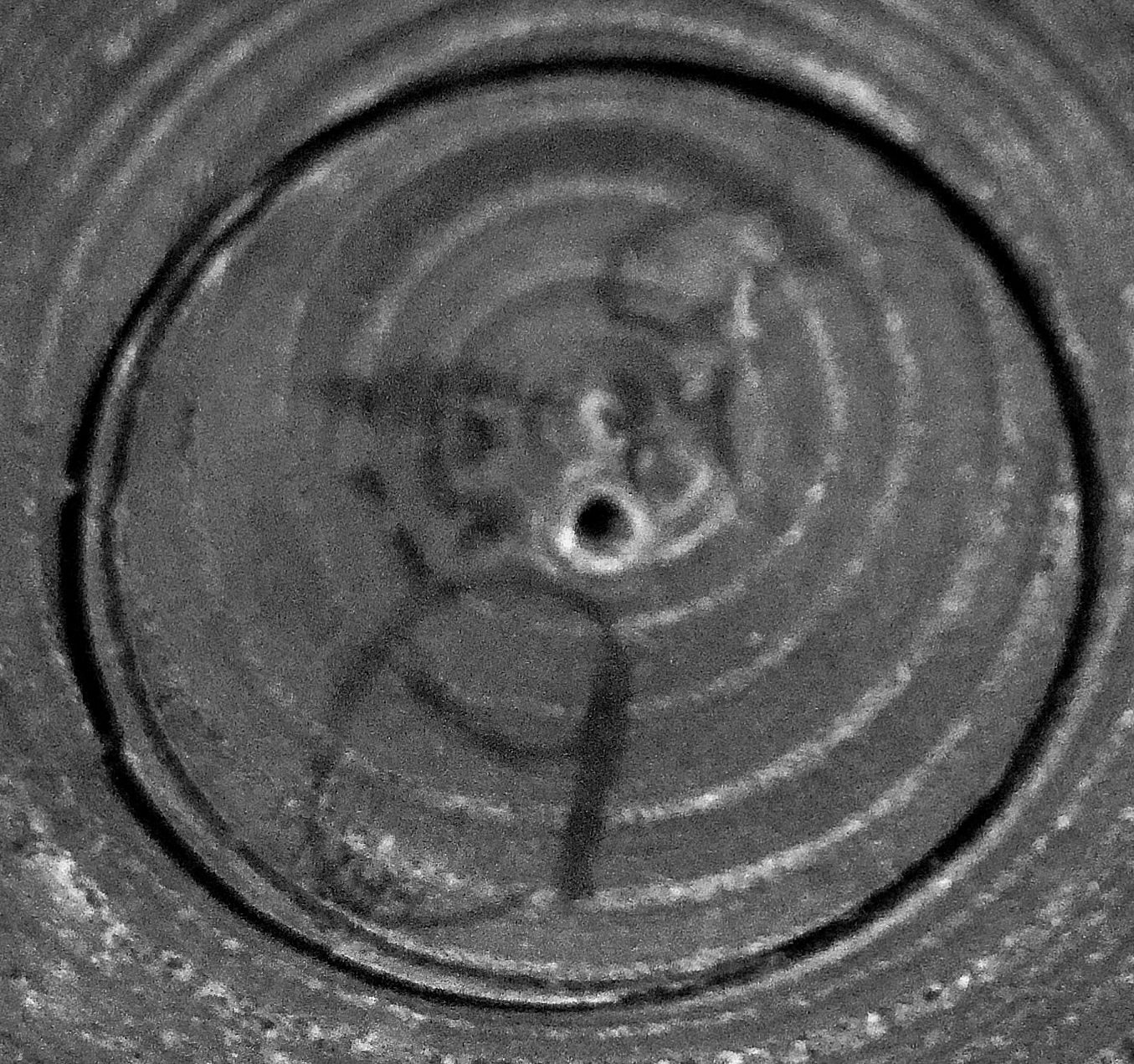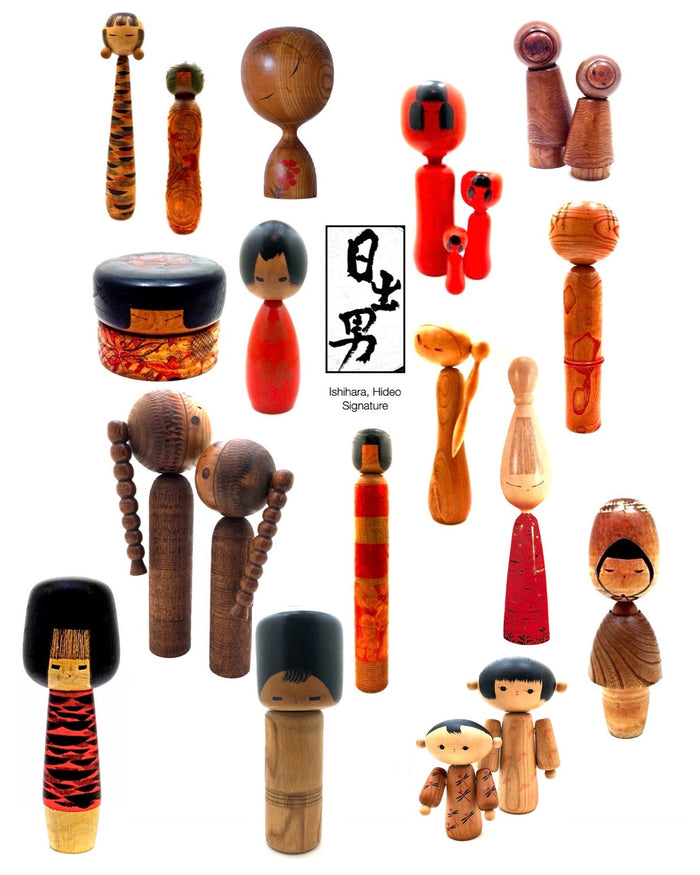


Vintage Sosaku Kokeshi entitled “Hanako | Flower Child” by Ishihara, Hideo (1925-1999) | Rare and Historically Significant
Dimensions: 11-1/4” h
Ishihara-san began making Sosaku Kokeshi, in the late 1950s, and in ten years, (1959-1969), he received more than 60 awards, including the highest honor, the Prime Minister’s Award. He was one of the founders of the Nippon Kokeshi Artistic Handicraft Association.
This Kokeshi, along with all other variations of this type is extremely RARE, and is one of the most painterly accomplished dolls of this artist, particularly since he produced a limited number of dolls in a very short period. Ishihara-san was inspired by nature, as seen in the textile interpretation on the body of this rare doll in which the subject matter which is wild red roses, (akaibara), is said to convey passion. So why is this important to this artist? Ishihara-san was under medical care for more than ten years, when he studied painting. After his recovery, he was inspired to create Sosaku Kokeshi, thus the creation of this series of different-sized dolls.
All of his figural carvings and artistic paintings beautifully complement the complexity of the figures which bring out the true nature of the wood, which in this case was Cherry, (Sakura). The design of the head of his dolls always includes a black “Bob” hairstyle which always covers most of the face with ‘one-stroke eyes’ (Hitofude-me), and a small indication of a nose and mouth. This particular approach remained the same throughout his history of making Sosaku Kokeshi. The doll has his full inscription on the bottom of the piece identifying him as the maker.
A retired professor colleague and textile historian at Tokyo’s Bunka Gakuin University indicated that the textile design incorporated into this doll represents textiles worn at the time of the 1960 Japanese Peace Movement, (“Anpo Struggle”), and is beautifully represented by the painting experience of Ishihara.
The piece was published in the 2022 publication of Sosaku Kokeshi: Celebrating the Major Artists of the Creative Movement. For more information on this artist go to the following link: https://mingeiarts.com/collections/artisan-woodworker-ishihara-hideo-1925-1999.
Condition: Excellent, lathe-turned creation. A tactile experience, for it is outstanding, excellent, impressive, and beautiful. No chips, cracks, breaks, missing pieces, or restoration, and it retains its original details and finish. The piece meets all the standards of the vintage collectible Sosaku Kokeshi by Ishihara, Hideo.

Artisan
Woodworker: Ishihara, Hideo
1925 - 1999
Biographical History:
Hideo graduated from Tohoku University with a degree in science. His grandfather was Iwataro Onuma, the Kokeshi artist credited with originating Naruto Kokeshi, perhaps the most famous style or strain of traditional Kokeshi types. Upon recovering from his illness, he moved to Sendai and began making Sosaku Kokeshi, and in ten years (1959-1969). During his medical treatment, he studied painting under Genichiro Inokuma. He lost interest in the traditional Kokeshi forms for he felt they were stagnating by family standards, and became an avid proponent of Sosaku Kokeshi allowing him the artistic freedom to experiment with various designs and forms. In 1964, he organized the Poetic Craft Exhibition and received more than sixty awards, including the highest honor, the Prime Minister’s Award. He was introduced to the twenty-three countries in Europe and America by NHK. He has sponsored 30 exhibitions in Japan including those at Matsuzakaya Nagoya and Ginza, and four exhibitions in overseas countries. He was one of the founders of the NKAHA, (Nippon Kokeshi Artistic Handicraft Association).
Collector's note – descriptive qualities, standard characteristics & ornamentation styles:
Ishihara-san’s dolls are based on many motifs found in nature and textile design. He loves portraying both young and old characters with differing hairstyles, (traditional and 1950s era). He illustrates numerous kimono styles in both painted form and carving and utilizes simple graphic treatment to emphasize the strong character of his dolls, which bring out the true nature of the wood materials through manipulation of the turned and carved wood. His dolls are always finished in a simple wax coating. It is also not unusual to see Hideo utilize sumi-e’ drawing of faces that have both the ‘one-stroke eye treatments, (Hitofude-me), as well as a variation of expressive renditions.
Explore & Learn More about Woodworker: Ishihara, Hideo